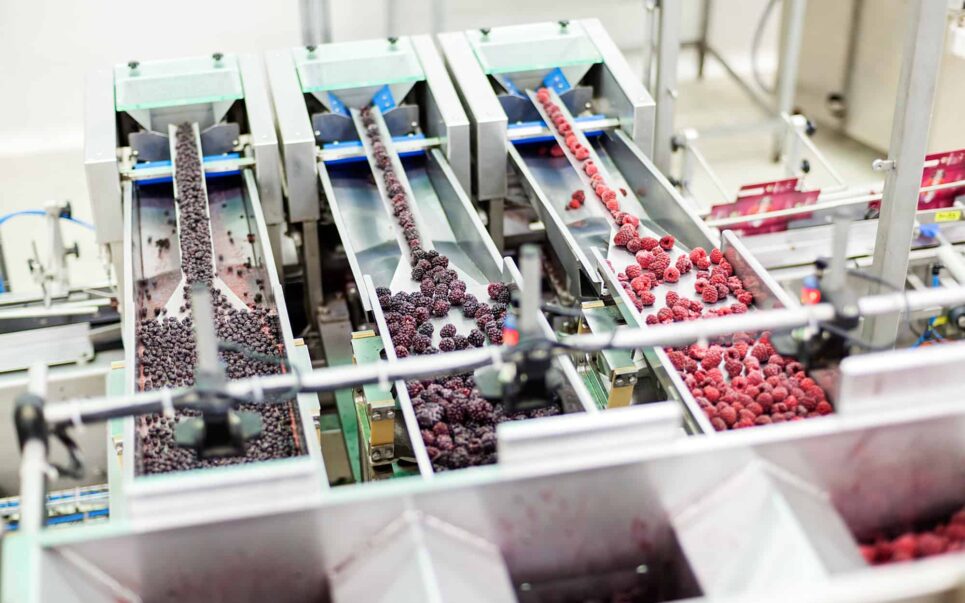Explaining FDA Metal Detection Critical Limits

Metal contaminants in food can pose serious health risks, which is why the FDA has created guidelines to ensure safety. By adhering to the FDA’s metal detection critical limits, food processing companies can guarantee that their products are safe for consumption.
In this blog, we’ll explore the maximum acceptable levels of metal contamination that a food product can contain.
What Are the FDA’s Metal Detection Critical Limits?
In an effort to protect consumer safety, the FDA sets strict guidelines on the amount of contaminants allowed in food.
One of the ways the FDA ensures the safety of food products is through metal detection. They’ve established critical limits for acceptable and unacceptable types of metal in food products, prohibiting metal fragments between 0.3 and 1 inch in size. And it’s not just large fragments that can be harmful. Foreign objects smaller than 0.3 inches can also pose a serious risk, especially to high-risk consumers, such as surgery patients, infants, and the elderly.
Why Are FDA Metal Detection Critical Limits Important?
Metal contamination in food products can have serious health consequences, from kidney dysfunction to cancer. That’s why it’s crucial to have critical limits for metal detection to ensure the safety of your customers and the success of your business.
Contrary to popular belief, metal contamination is not as rare as you might think. Even the smallest piece of metal can enter your food during the manufacturing process, posing a significant risk to consumers. By following strict metal detection standards set by the FDA, you can ensure that your products are free from hazardous materials. These critical limits act as a safety net, preventing lawsuits, class-action claims, and other major consequences that could jeopardize your business.
Which Metals Are Regulated by FDA Metal Detection Critical Limits?
FDA metal detection critical limits regulate the following types of metals:
Ferrous Metals
Any metal that contains iron falls into this category. Some common examples of ferrous metals include chromium, molybdenum, nickel, vanadium, and manganese.
Non-Ferrous Metals
Non-ferrous metals include lead, tin, zinc, copper, aluminum, gold, and silver.
Stainless Steels
Stainless steels are both non-conductive and characteristically non-magnetic, but they become magnetic through work-hardening. This means that stainless steel fragments usually found in food processing lines are most often magnetic and can effectively be collected & retained by magnetic separators!
Learn about different food processing regulations to ensure your facility is in compliance with industry standards.
How to Implement FDA Metal Detection Critical Limits in Production
Use the following steps to implement the FDA’s metal detection critical limits to reduce metal contamination hazards:
Assess Risks
Assessing risks is the crucial first step. This involves identifying potential hazards and determining their significance. Every step in the production process should be examined, from transporting ingredients to using mixing machines and conveyor belts, and even canning products. By understanding these risks, you can implement effective metal detection measures to ensure consumer safety.
Establish Critical Limits
To effectively avoid hazards, it’s crucial to identify your critical control points. Choosing the right control points is key to mitigating risks.
Imagine you have a new metal detector, but using it at the wrong stage in production would be pointless. Why bother detecting metal if it is already too late to prevent any potential contamination? By establishing critical limits at the right control points, you can catch any potential metal contaminants before they wreak havoc on your products and brand reputation.
Select Appropriate Equipment
Whether you’re dealing with liquid products or powders, selecting the appropriate equipment will ensure accurate and reliable product protection. By investing in the proper magnetic separator, you will not only save time and money, but also increase your customers’ trust in your brand.
Calibration and Validation
Next, make sure your equipment is functioning properly through validations and inspections. Regular in-house and 3rd party inspections and validations will lower your risks and allow you to closely monitor your equipment and make improvements where required.
Train Employees
Training your employees is crucial to ensure that everyone is on the same page and follows the new standards. Not only will this prevent mistakes, but it will also improve the overall efficiency of your facility. Teach your team members how to use the equipment and the proper protocols for preventing hazards. Make sure they understand critical control points, risks, limits, calibration requirements, and why these measures are essential for the smooth operation of your facility.
Implement Documentation and Record Keeping
The final key step is to have proper documentation and record-keeping in place. This prevents isolated contamination incidents from affecting your entire production. Make sure you have a plan in place to identify and address the source of contamination after each test.
If metal is detected, swift action is essential. Your team should know exactly what to do—remove the metal, test the equipment, and proceed with caution. On the other hand, when batches pass the metal detection test, it’s important to maintain thorough and accurate records. By implementing these critical limits and embracing meticulous documentation, you’re protecting your customers and your brand’s reputation.
Helping You Comply With the FDA’s Metal Detection Critical Limits
Whether you’re in the food and beverage, bakery, dairy, or meat processing industry, it’s essential to comply with the FDA’s metal detection critical limits.
With our state-of-the-art technology, Magnattack® offers ultimate solutions for removing metal contaminants from your production lines. Our magnetic separators are designed to efficiently eliminate magnetic fragments such as ferrous and non-ferrous metals, including work-hardened stainless steel, ensuring the highest level of product purity and safety. We can also provide expert guidance on factors such as heat rating, design sanitation, and magnet strength maintenance to ensure effective magnetic separation without any blockages. Additionally, our products comply with current HACCP and best practice standards. Contact us today to learn more about our magnetic separators.